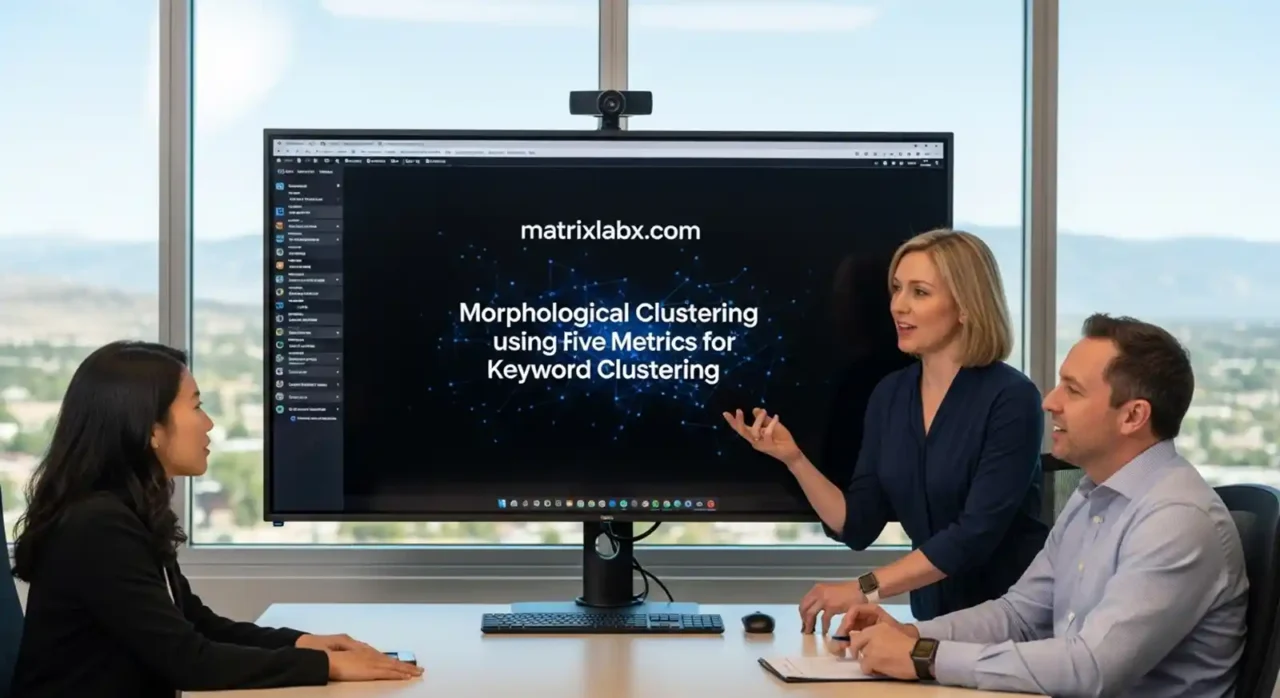From Burnout to Breakthrough: How AI Transforms Content Creation for Managers
Learn How to Move From Burnout to Breakthrough: How AI Transforms Content Creation for Managers.
In the fast-paced world of marketing, where creativity meets relentless deadlines, burnout has become an all-too-familiar adversary for managers. The demand for fresh, engaging content is unending, and the pressure to perform can be overwhelming.
But what if the key to turning this burnout into a breakthrough lies not in working harder, but in working smarter? Enter the transformative power of Artificial Intelligence.
Imagine a world where AI takes on the heavy lifting of content creation, freeing you to focus on strategy and innovation. This isn’t just a futuristic fantasy; it’s the new reality for forward-thinking marketing managers.
With AI tools that can generate content, analyze audience engagement, and even predict trends, you can finally step off the hamster wheel of perpetual production. Consider the gaps in your business, such as strategy, personnel, and technology. If any of those are not performing, you have a performance gap.
Consider Sarah, a marketing manager who once spent countless hours brainstorming and drafting. With AI, her team now harnesses data-driven insights to craft compelling narratives that resonate with their audience.
The result? Not only has productivity soared, but the quality of their content has reached new heights. AI doesn’t replace the human touch; it enhances it, allowing for more creativity and less burnout.
For marketing managers ready to pivot from stress to success, AI offers a pathway to redefine what’s possible. Imagine the potential of spending less time on repetitive tasks and more on developing groundbreaking campaigns.
Picture a future where your team thrives, creativity flows, and innovation becomes the norm.
Intrigued? Ready to transform burnout into a breakthrough? Dive into the world of AI-driven content creation and discover how you can revolutionize your approach, achieve unprecedented efficiency, and lead your team to new heights of success.
The future of content creation is here, and it’s time to embrace it.
- According to a recent report by Gartner, digital marketing budgets are projected to increase by 15% in 2024, as companies prioritize digital transformation to enhance customer engagement and personalization.
- A study by McKinsey reveals that companies leveraging advanced data analytics in their marketing strategies see an average revenue increase of 20% compared to those that do not, highlighting the critical role of data-driven decision-making.
- Forrester Research indicates that 70% of consumers expect brands to provide personalized experiences, emphasizing the growing importance of tailored marketing strategies in driving customer loyalty and satisfaction.
Is Your Marketing Stack Leaving Money on the Table?
Your disconnected tools see pieces of the puzzle. A unified AI platform sees the whole picture. Enter your metrics to quantify the impact of switching to MatrixLabX.
Your Current Metrics
Core Business Inputs
1. Searching
2. Streaming
3. Scrolling
4. Shopping
Your Performance Transformed
| Metric | Your Platform | MatrixLabX | Monthly Lift |
|---|
Total Estimated Annual Gain
$0
from improved conversions and recovered revenue
The Rise of Artificial Intelligence in Marketing
Artificial Intelligence (AI) has rapidly transformed the marketing landscape, offering businesses unprecedented opportunities to refine their strategies.
With AI, marketers can analyze vast amounts of data to gain insights into consumer behavior, preferences, and trends. This technology enables personalized marketing, where AI algorithms tailor content to individual consumers, thereby increasing engagement and conversion rates.
According to a report by Salesforce, 84% of marketers use AI, with 75% noting that it significantly enhances customer satisfaction.
AI tools, such as chatbots, predictive analytics, and recommendation engines, have become integral to modern marketing strategies, driving efficiency and effectiveness.
Leveraging AI for Sales Optimization
In the sales domain, AI is a game-changer, providing tools that streamline processes and improve outcomes.
Sales teams are leveraging AI-driven CRM systems that provide predictive insights, enabling them to prioritize leads and refine follow-up strategies.
AI can analyze historical data to forecast sales trends and identify potential opportunities, allowing sales teams to focus their efforts strategically.
According to McKinsey, companies that implement AI in their sales processes can see a 50% increase in leads and appointments, as well as a 60-70% reduction in call time.
These statistics underscore AI’s potential to enhance sales productivity and drive revenue growth.
The Role of AI in Customer Relationship Management
AI is revolutionizing Customer Relationship Management (CRM) by automating routine tasks and providing deeper insights into customer interactions. AI-powered CRM systems can analyze customer data to identify patterns and predict future behaviors, allowing businesses to tailor their approaches accordingly.
This capability not only improves customer retention but also enhances the overall customer experience.
According to a study by Gartner, by 2025, 75% of B2B sales organizations will augment traditional sales playbooks with AI-driven guided selling solutions.
This shift highlights the growing importance of AI in cultivating and maintaining customer relationships.
Ethical Considerations in AI Marketing
While AI offers numerous benefits, it also raises ethical concerns, particularly around data privacy and algorithmic bias. Marketers must ensure that their AI systems are transparent and compliant with data protection regulations, such as GDPR.
Additionally, AI algorithms should be regularly audited to prevent biases that could lead to unfair targeting or discrimination.
The World Economic Forum emphasizes the importance of ethical AI, advocating for guidelines that ensure AI is used responsibly in marketing and advertising.
Businesses that prioritize ethical AI practices can build trust with their consumers, which is crucial in maintaining a positive brand reputation.
In conclusion, AI is a transformative force in marketing and sales, offering tools that enhance efficiency, personalization, and customer engagement.
However, businesses must navigate the ethical challenges to harness AI’s potential responsibly. As AI continues to evolve, it will undoubtedly play an even more significant role in shaping the future of these industries.
From Burnout to Breakthrough: How AI Transforms Content Creation for Managers

Step 1: Assess Current Content Creation Process
- Analyze Workflow: Identify bottlenecks and repetitive tasks to optimize efficiency.
- Evaluate Team Capacity: Determine workload and stress levels.
- Set Clear Objectives: Define goals for content quality and quantity.
Step 2: Research AI Tools
- Content Generation: Explore tools like AIContentPad.
- SEO Optimization: Consider AISEOPad for unified SEO performance.
- Editing and Proofreading: Utilize Grammarly or ProWritingAid to reduce errors.
Step 3: Select Appropriate AI Services
- Trial and Compare: Test different AI tools to see which aligns with your needs.
- Budget Considerations: Evaluate costs against expected productivity gain to ensure optimal allocations.
- Integration: Ensure compatibility with existing systems (e.g., CMS platforms).
Step 4: Train Your Team
- Workshops and Tutorials: Provide training sessions on using AI tools.
- Best Practices: Develop guidelines for AI-assisted content creation.
- Continuous Learning: Encourage ongoing education on AI advancements.
Step 5: Implement AI in Content Creation
- Content Ideation: Use AI to generate ideas and outlines.
- Drafting and Editing: Leverage AI for initial drafts and editing support.
- Performance Tracking: Utilize analytics to measure the success of your content.
Step 6: Monitor and Optimize
- Feedback Loops: Collect feedback from the team and adjust processes.
- Performance Metrics: Regularly review analytics to assess the impact of AI on your organization.
- Iterate and Improve: Continuously refine AI usage based on insights.
Step 7: Address Ethical Considerations
- Bias and Fairness: Ensure AI tools promote unbiased content.
- Transparency: Disclose AI involvement in content creation.
- Data Privacy: Adhere to data protection regulations (e.g., GDPR).
Step 8: Scale and Innovate
- Expand Use Cases: Explore AI for additional tasks, such as social media management.
- Collaboration: Foster a collaborative environment between AI and human creativity.
- Innovation: Stay updated on AI trends to integrate new features and tools.
By systematically implementing AI in content creation, managers can alleviate burnout, enhance productivity, and achieve breakthroughs in content quality.
Regular evaluation and adaptation are key to maximizing the benefits of AI in marketing and sales.
SOV Comparison Tool
Analyze your Share of Voice and get actionable recommendations.
From Burnout to Breakthrough: How AI Transforms Content Creation for Managers

In today’s fast-paced digital landscape, content creation can be a significant source of stress for managers.
The constant demand for fresh, engaging content often leads to burnout. However, the integration of Artificial Intelligence (AI) in content creation is transforming this landscape, providing innovative solutions to alleviate stress and enhance productivity.
Below are three case studies demonstrating the transformative impact of AI on content creation for managers.
Case Study 1: Streamlining Content Production at TechCorp
Challenge: TechCorp, a leading technology company, faced challenges with its content production team, who were overwhelmed by the demand for technical articles, product descriptions, and marketing materials.
The pressure to maintain quality and meet deadlines was leading to burnout.
Solution: TechCorp implemented an AI-driven content generation tool that could draft initial versions of technical documents and marketing content. The AI was trained to understand the company’s tone and style, allowing it to produce content that required minimal editing.
Outcome:
- Increased Efficiency: Content production time was reduced by 40%.
- Enhanced Quality: The AI tool maintained a consistent brand voice, improving overall content quality.
- Reduced Burnout: By having AI handle initial drafts, the team experienced less stress and could focus on more creative tasks.
Case Study 2: Creative Innovation at FashionForward
Challenge: FashionForward, a rapidly growing fashion retailer, needed to produce a high volume of social media content and blog posts to engage its audience.
The creative team was stretched thin, leading to a decline in innovation and increased turnover.
Solution: By integrating AI-powered content suggestion tools, FashionForward provided their team with AI-generated ideas and outlines for posts.
This tool analyzed trending topics and audience preferences to suggest relevant content themes.
Outcome:
- Boosted Creativity: The team leveraged AI suggestions as a springboard for generating more innovative content.
- Improved Engagement: Social media audience engagement increased by 30%.
- Lower Turnover: Employee satisfaction improved, resulting in a 20% reduction in turnover.
Case Study 3: Personalized Marketing at HealthHub

Challenge: HealthHub, a healthcare provider, struggled to personalize content for its diverse patient base.
The marketing team was overwhelmed by the need to create tailored messages for different demographics.
Solution: HealthHub adopted an AI-driven personalization platform that analyzed patient data to generate customized content for newsletters and email campaigns.
The AI tool segmented the audience and crafted messages that resonated with each group.
Outcome:
- Enhanced Personalization: Patients received content tailored to their specific health needs and interests.
- Increased Engagement: Email open rates increased by 25%, and click-through rates improved by 15%.
- Alleviated Stress: The marketing team could focus on strategic planning rather than manual content customization.
These case studies highlight the profound impact of AI on content creation, demonstrating how it can alleviate burnout, enhance creativity, and improve personalization.
By embracing AI technologies, managers can refine their content strategies, resulting in increased efficiency and enhanced employee satisfaction.
FAQs: From Burnout to Breakthrough: How AI Transforms Content Creation for Managers
1. What is content creation burnout, and why is it a problem for managers?
Content creation burnout occurs when managers and their teams are overwhelmed by the constant demand for new, engaging content. This can lead to decreased productivity, creativity, and overall job satisfaction, impacting both individual performance and organizational goals.
2. How does AI help alleviate content creation burnout?
AI streamlines the content creation process by automating repetitive tasks, providing data-driven insights, and generating content ideas. This allows managers to focus on strategy and creativity, reducing stress and workload.
3. What specific tasks in content creation can AI automate?
AI can automate tasks such as keyword research, topic generation, proofreading, and even initial draft writing. It can also analyze audience engagement and suggest improvements, making content more effective.
4. Can AI-generated content maintain quality and creativity?
Yes, AI tools have advanced significantly, producing high-quality content that aligns with brand voice and audience expectations. However, human oversight is essential to ensure creativity and emotional resonance.
5. How does AI enhance the content strategy for managers?
AI provides data-driven insights into audience preferences, engagement metrics, and content performance. This enables managers to make informed decisions, optimize strategies, and tailor content to meet audience needs effectively.
6. What are the cost benefits of using AI in content creation?
AI reduces the need for extensive human resources by automating tasks, leading to cost savings in labor. It also enhances efficiency, allowing teams to produce more content in less time without sacrificing quality.
7. Are there any risks associated with relying on AI for content creation?
Potential risks include over-reliance on AI, which might lead to a loss of human touch and creativity. Additionally, data privacy concerns and the need for continuous oversight to ensure content quality are important considerations.
8. How can managers integrate AI into their current content workflows?
Managers can start by identifying repetitive tasks that can be automated, investing in AI tools that align with their goals, and training their teams to use these tools effectively. It’s crucial to maintain a balance between AI and human input.
9. What are some popular AI tools for content creation?
Popular AI tools include Grammarly for proofreading, Jasper for content generation, and BuzzSumo for trend analysis. These tools assist in various aspects of content creation, enhancing efficiency and quality.
10. How does AI impact the future of content marketing for managers?
AI is set to revolutionize content marketing by providing deeper insights, personalizing content at scale, and enabling more agile and responsive strategies. Managers who adopt AI will likely experience enhanced engagement and a competitive advantage.

Conclusion
AI tools have demonstrated their ability to efficiently handle repetitive tasks, such as data analysis and content scheduling, freeing up managers to focus on strategic planning and creative ideation.
By leveraging AI’s capabilities, managers can ensure a steady flow of personalized, relevant content tailored to their target audiences. This not only enhances engagement but also builds stronger brand loyalty.
The transformative power of AI in content creation marks a pivotal shift for managers navigating the demanding landscape of modern marketing.
As the digital ecosystem continues to expand, the pressure on managers to produce high-quality, engaging content has intensified, often leading to burnout. However, AI offers a promising solution by streamlining and enhancing the content creation process.
Moreover, AI-driven analytics provide managers with deep insights into consumer behavior, enabling more informed decision-making.
These insights help craft content that resonates with audiences, thereby increasing the effectiveness of marketing campaigns.
AI’s predictive analytics can also forecast trends, allowing managers to stay ahead of the curve and adapt their strategies proactively.
The integration of AI in content creation also fosters collaboration and innovation. AI tools can generate content drafts, suggest improvements, and even optimize for SEO, significantly reducing the time and effort required from human teams.
This collaboration between human creativity and AI efficiency results in higher-quality content and a more dynamic workflow.
Furthermore, AI’s role in automating routine tasks enables managers to allocate resources more effectively, allowing them to focus on areas that require human intuition and creativity. This not only improves productivity but also enhances job satisfaction by reducing the risk of burnout among team members.
In the sales and marketing industry, where staying competitive is crucial, AI catalyzes breakthrough innovations.
By embracing AI, managers can not only alleviate the pressures of content creation but also drive growth and innovation within their organizations.
As AI technology continues to evolve, its potential to revolutionize content creation will only expand.
Managers who adopt AI tools will find themselves better equipped to navigate the challenges of the digital age, ultimately leading to more successful and sustainable marketing strategies.
In this era of rapid technological advancement, the synergy between AI and human creativity is the key to unlocking new possibilities. By transforming burnout into breakthroughs, AI empowers managers to not only meet the demands of the industry but to excel and lead with confidence.

